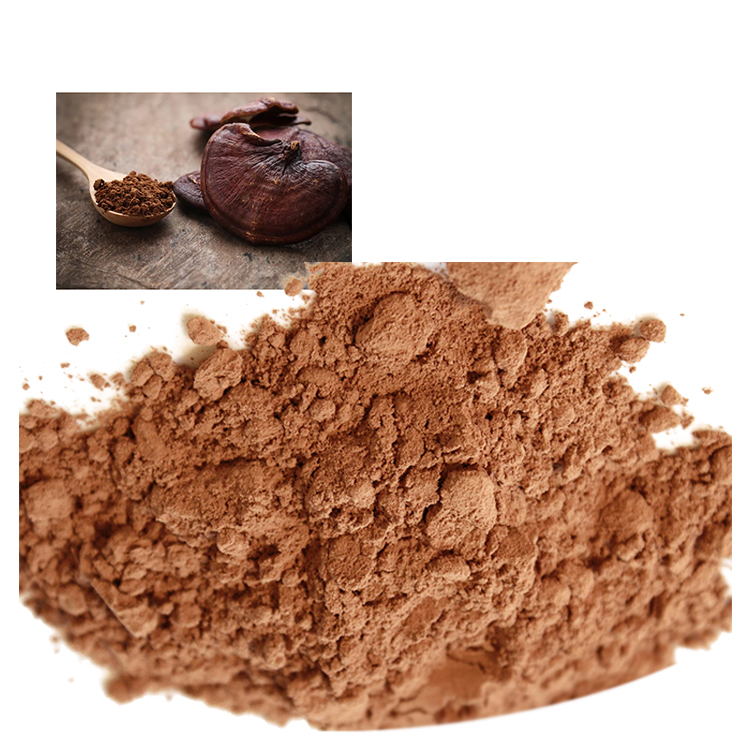As the global demand for Reishi mushroom extract grows, so does the scale and complexity of bulk packaging, storage, and logistics for ingredients like USDA Certified Ganoderma Powder and Organic Mushroom Extract Powder. However, handling these valuable and sensitive products in large quantities comes with unique risks at every stage. This article examines the most critical risk points in the bulk supply chain for Reishi extract—including packaging, warehousing, and shipping—and offers practical strategies for robust risk control and quality assurance.
1. Bulk Packaging: Risks and Preventive Strategies
Moisture and Humidity:
Risk: Moisture ingress can degrade key compounds (like polysaccharides and triterpenes), cause clumping, or trigger mold growth.
Controls: Use multi-layer moisture-proof bags, inner PE liners, and food-grade drums. Vacuum or nitrogen-flushing helps prevent oxidation and spoilage.
Case: Organic Mushroom Extract Powder suppliers often use double-layer aluminum foil bags within fiber drums to maintain quality over long shipping routes.
Contamination and Cross-contact:
Risk: Bulk facilities may have multiple product lines, risking contamination from allergens, heavy metals, or other botanicals.
Controls: Implement dedicated production lines, rigorous cleaning protocols, and clear labeling. Only source from facilities with third-party GMP or ISO certifications.
Physical Integrity:
Risk: Bulk packages are exposed to handling damage—tears, punctures, compression—especially during palletization and transport.
Controls: Reinforced drums, proper sealing, stretch wrapping, and impact indicators all help preserve product integrity.
2. Storage: Warehouse Management and Risk Prevention
Temperature and Humidity Control:
Risk: Excessive heat or humidity accelerates compound degradation, clumping, and microbial growth.
Controls: Climate-controlled warehouses (16–25°C; RH < 60%) and continuous monitoring. Use desiccants and dehumidifiers if necessary.
Example: Top brands like USDA Certified Ganoderma Powder always store in regulated environments with real-time logging.
Pest and Rodent Control:
Risk: Infestation leads to contamination and costly recalls.
Controls: Regular pest management, sealed storage areas, and frequent inspections. Food-grade fumigation as a last resort.
FIFO (First-In, First-Out) Inventory Management:
Risk: Improper rotation may cause older stock to degrade or expire before use.
Controls: Digital warehouse management systems to track lot numbers and automate FIFO.
3. Logistics: Transportation Risks and Control Measures
Vibration and Mechanical Stress:
Risk: Repeated movement can lead to powder compaction, package rupture, and loss of product.
Controls: Use vibration-damping pallets, load-securing straps, and specify “fragile/handle with care” in logistics documentation.
Temperature Excursions:
Risk: Long transit (especially overseas or by container) exposes product to wide temperature swings, risking quality loss.
Controls: Insulated containers, cold-chain logistics for sensitive extracts, route planning to avoid harsh climates.
Customs and Regulatory Delays:
Risk: Regulatory hold-ups increase exposure to suboptimal storage or transit conditions.
Controls: Pre-clearance documentation, experienced customs brokers, and local compliance expertise.
Theft and Counterfeiting:
Risk: High-value cargoes (such as USDA Certified Ganoderma Powder) may be targeted for theft or tampering.
Controls: Tamper-evident seals, GPS-tracked shipments, and secure carrier contracts.
4. Real-World Best Practices for Supply Chain Security
Integrated Quality Systems: Leading suppliers require documentation at every supply chain stage: from batch testing before shipment to arrival inspection and real-time tracking during transit.
Third-Party Auditing and Certification: Look for partners with ISO22000, HACCP, or GMP certifications, and audit facilities regularly. Example: Suppliers of Organic Mushroom Extract Powder often share annual audit reports and traceability systems with clients.
Digital Traceability: Advanced ERP or blockchain solutions provide transparency for buyers and help quickly isolate any incidents.
5. Conclusion: Protecting Value, Brand, and Consumer Safety
From bulk packaging to final delivery, each supply chain stage for Reishi extract requires tailored risk prevention. Leading brands—whether shipping Ganoderma Extract Powder, Organic Red Ganoderma Powder, or USDA Certified Ganoderma Powder—invest in climate control, secure packaging, documented processes, and digital traceability. Only by mastering these logistics and quality controls can companies ensure that their product retains its full bioactivity, safety, and premium value from factory to customer.
Included keywords: USDA Certified Ganoderma Powder, Organic Mushroom Extract Powder, Organic Reishi Mushroom Powder, Ganoderma Extract Powder, Organic Red Ganoderma Powder.
Read More:
Real Consumer Feedback on Ganoderma Extract: Honest Reviews & Global Insights
Thirty Days on Ganoderma Extract: What Changed in My Body?
Precautions and Contraindications When Taking Ganoderma Extracts: A Comprehensive Guide
Hangzhou Molai Biotech Co., Ltd has supply capacity 1200+ tons per year for mushroom powders and extracts, including the mushroom mycelium from modern technology of Deeply Liquid Fermentation and fruiting bodies from the grown real mushrooms to meet the different markets.
Hangzhou Molai Biotech Co., Ltd supplies the products both in Powders and Extracts for commercial using worldwidely, such as Cordyceps Sinensis, Cordyceps Militaris, Maitake Mushroom, Lion’s Mane Mushroom, Turkey Tail Mushroom, Reishi Mushroom, Chaga Mushroom etc.
We offer OEM and ODM services, could extract the products according to your special requirements, process the powders/extracts into Capsules, Tablets, Small Bags, Mushroom Bars, Mushroom Coffee etc.
Organic Lion's Mane Mushroom Extract
Organic Reishi Mushroom Extract
Organic Cordyceps Militaris Extract
Organic Turkey Tail Mushroom Extract
Organic Chaga Mushroom Extract
Organic Shiitake Mushroom Extract
Organic Maitake Mushroom Extract
Organic Tremella Mushroom Extract






